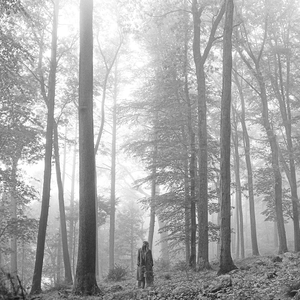When Taylor Swift released folklore on July 24, 2020, it was as if the world collectively leaned in to listen to a new story being told. Arriving as a surprise announcement in the midst of the pandemic, the album marked a significant departure from the glittering, pop-laden anthems of Lover (2019) and the electrified energy of Reputation (2017). Instead, folklore unraveled like a worn diary filled with forgotten tales, leaning heavily into introspection, storytelling, and a stripped-down sonic palette that eschewed the big-budget pop formulas Swift had mastered.
In the broader musical landscape, folklore felt both timely and timeless. At a moment when many listeners sought solace and stillness, the album’s delicate textures and poignant lyricism created an atmosphere of intimacy and contemplation. Drawing from indie-folk and alternative influences, Swift collaborated with Aaron Dessner of The National and longtime collaborator Jack Antonoff to craft a soundscape that was hauntingly sparse yet intricately layered. This pivot not only redefined Swift’s artistry but also solidified her status as one of the most versatile and daring songwriters of her generation.
Sonic Exploration

On folklore, Taylor Swift embraces a soundscape that feels intentionally subdued yet profoundly rich. The production, helmed primarily by Aaron Dessner and Jack Antonoff, is crisp and immersive, though it leans into an organic, understated elegance rather than the gleaming polish of her earlier pop records. The instrumentation is meticulously arranged, creating a lush yet minimalistic atmosphere where every sound—whether a single piano note or the gentle pluck of a guitar string—feels purposeful. This intimate production style aligns perfectly with the album’s themes of reflection, longing, and storytelling, enveloping the listener in a cocoon of sonic warmth and melancholy.
Musical Arrangements
The musical arrangements on folklore are a masterclass in restraint. Dessner’s signature touch is evident in tracks like “exile” and “seven,” where layered strings, delicate piano lines, and atmospheric textures create a moody, almost cinematic quality. Jack Antonoff’s contributions, such as on “august” and “this is me trying,” balance the album with shimmering synths and swelling crescendos that never overwhelm the introspective nature of the songs. The sparse use of percussion throughout allows the emotional weight of the lyrics and melodies to take center stage, with vocals often layered in ethereal harmonies that feel both haunting and tender.
One of the standout moments in arrangement is “epiphany,” which pairs ambient, hymn-like vocals with a restrained orchestral backing, evoking a sense of quiet transcendence. Meanwhile, “the last great American dynasty” uses a jaunty rhythm and bright instrumentation to contrast its tale of decadence and historical drama. Such moments showcase Swift’s ability to adapt the sonic landscape to the narrative of each track, making the music as much a storyteller as the lyrics.
Genre Elements
Genre-wise, folklore draws heavily from indie-folk and chamber pop, with nods to alternative rock and a touch of Americana. It blends these genres seamlessly, avoiding overt homage in favor of creating something uniquely its own. Tracks like “betty” dip into folk and country traditions with harmonica and acoustic guitar, while “my tears ricochet” carries a ghostly choral quality reminiscent of gothic pop. Yet, despite its sonic cohesion, folklore remains genre-fluid, borrowing textures and techniques from diverse styles without feeling derivative.
Lyrical Analysis

At the heart of folklore lies Taylor Swift’s exceptional gift for storytelling, and on this album, her lyrics feel more literary than ever. The central themes of the album revolve around memory, loss, longing, and self-discovery. Swift explores these ideas through a tapestry of characters and narratives that weave fiction with personal reflection. Recurring motifs—such as the passage of time, fractured relationships, and the haunting persistence of the past—lend the album a sense of cohesiveness, inviting listeners to dive deeper into its interconnected tales.
One of folklore’s defining lyrical achievements is its ability to transport the listener into vivid, emotionally charged worlds. Songs like “the last great American dynasty” recount historical sagas with a novelist’s precision, while “august” captures the fleeting ache of a doomed summer romance with lines like “For me, it was enough / To live for the hope of it all.” The love triangle explored in “cardigan,” “august,” and “betty” underscores Swift’s talent for approaching a single story from multiple perspectives, giving voice to each character with equal empathy and nuance.
The lyrical depth on folklore is a notable evolution from Swift’s earlier work. While her past albums have often been grounded in autobiographical storytelling, folklore introduces a more abstract, open-ended approach. Tracks like “my tears ricochet” and “seven” employ poetic imagery and metaphors that leave room for interpretation, allowing listeners to imbue the songs with their own emotions and experiences.
Emotional Impact
Emotionally, the lyrics on folklore resonate on a profound level, evoking a spectrum of feelings that range from bittersweet nostalgia to raw heartbreak. The album excels in creating moments of quiet introspection; songs like “peace” and “hoax” confront the complexities of love and the sacrifices it demands, while “mirrorball” captures the yearning to be seen and accepted.
Cohesion and Flow

One of the defining strengths of folklore is its remarkable cohesion, both in its sonic identity and its thematic resonance. The album unfolds with an almost novel-like progression, where each track feels like a new chapter contributing to the greater whole. From the opening notes of “the 1” to the somber closing of “hoax,” folklore takes listeners on an emotional journey that ebbs and flows with deliberate pacing. The tracklist is sequenced with care, allowing the narrative arcs and tonal shifts to feel natural and immersive rather than abrupt.
The flow between tracks is seamless, with transitions that subtly guide the listener through the album’s varying moods and stories. For instance, the wistful optimism of “the 1” is immediately tempered by the haunting melancholy of “cardigan,” creating a sense of emotional duality that persists throughout. Similarly, the juxtaposition of “exile” with “my tears ricochet” shifts the narrative focus from external conflict to deeply personal grief, underscoring the album’s layered approach to storytelling. Even lighter moments, such as the playful “the last great American dynasty,” are tempered by the wistful longing of what follows, like the dreamy, heartache-laden “august.” This deliberate pacing ensures that folklore never loses its emotional grip on the listener.
Thematic Consistency
Thematic consistency is another pillar of the album’s cohesion. Themes of introspection, loss, and storytelling are woven through every track, whether in the deeply personal confessions of “mirrorball” and “this is me trying” or the fictionalized narratives of “betty” and “epiphany.” Despite the diversity of perspectives and characters, there’s a unifying sense of vulnerability and intimacy that ties the album together. Stylistically, the album maintains its indie-folk and chamber pop aesthetic, with sparse yet intricate arrangements and a subdued palette of instruments that provide continuity across the tracklist.
Yet, within this cohesive framework, folklore avoids monotony. Subtle shifts in tone and texture keep the album dynamic. For example, the harmonica-laden warmth of “betty” stands apart from the ethereal, almost hymn-like quality of “epiphany,” while the tender strings of “seven” provide a contrast to the brooding duet of “exile.” These variations add depth to the listening experience without disrupting the overarching mood of introspection and storytelling.
Standout Tracks and Moments
While folklore is an album where every track feels essential, certain songs rise to the surface as particularly impactful, showcasing Taylor Swift’s artistry at its most refined. These standout tracks not only anchor the album thematically but also highlight its innovative and emotional core.
Exile
One of the most striking tracks is “exile,” a duet with Justin Vernon of Bon Iver. The song’s haunting interplay of Swift’s delicate vocals and Vernon’s resonant baritone creates a powerful tension, embodying the miscommunication and heartbreak of a dissolving relationship. The cinematic arrangement—anchored by a mournful piano and swelling strings—adds to its emotional weight, culminating in a spine-chilling moment when their voices overlap in a desperate call-and-response. It’s a masterclass in storytelling through music, both narratively and sonically.
August
“august” is another standout, capturing the bittersweet beauty of a fleeting summer romance. The song’s wistful tone is elevated by shimmering production, with cascading strings and soft percussion mirroring the fleeting, sunlit memories the lyrics evoke. The line “You weren’t mine to lose” delivers a quiet devastation, encapsulating the tender ache of longing and loss that defines much of the album.
Betty
“betty” offers a refreshing shift, both musically and narratively. Rooted in folk traditions, its harmonica-driven arrangement harks back to Swift’s country beginnings, yet the track feels modern in its candid storytelling. Told from the perspective of a teenage boy seeking forgiveness, it adds a layer of youthful vulnerability and earnestness to the album’s tapestry of perspectives.
My Tears Ricochet
“my tears ricochet” is another standout, notable for its raw emotional power and lyrical complexity. As the first song Swift wrote for the album, it feels deeply personal, with its themes of betrayal and grief resonating universally. The line “You wear the same jewels that I gave you as you bury me” is one of the album’s most striking, weaving imagery and metaphor into a piercing depiction of emotional wounds.
Memorable Moments
Among the album’s most memorable moments is the bridge of “mirrorball,” where Swift’s voice floats over glittering instrumentation as she sings “I’m still trying everything to keep you looking at me.” The vulnerability in this confession encapsulates the album’s introspective tone.
The innovative structuring of “the last great American dynasty” deserves mention, too, for its playful yet poignant storytelling. Swift narrates the scandalous history of socialite Rebekah Harkness with wry humor, only to tie it back to her own life in a clever twist: “I had a marvelous time ruining everything.” This fusion of history and autobiography exemplifies the album’s seamless blending of fiction and reality.
Artistic Contribution and Innovation

folklore stands as a watershed moment not just in Taylor Swift’s career but in the broader music industry, redefining what a mainstream pop artist can achieve when they step away from convention. At a time when pop music often emphasizes high-energy production and instant gratification, folklore takes a bold step into introspection and subtlety. Rooted in indie-folk and chamber pop traditions, the album blurs the lines between genres, creating a bridge between Swift’s mass appeal and the more understated, art-driven ethos of the indie world. In doing so, it expands the reach of these genres, introducing them to a global audience largely unfamiliar with their understated charm.
Within its genre, folklore doesn’t merely adhere to norms—it reshapes them. While acoustic-driven, introspective albums are staples in the indie-folk canon, it’s rare for an artist of Swift’s commercial stature to create such an album, particularly after a decade of dominating pop radio. By collaborating with Aaron Dessner, a stalwart of the indie scene, and Jack Antonoff, a versatile pop architect, Swift created a work that feels equally at home in a coffee shop playlist as it does on the Grammy stage. This convergence of indie authenticity and mainstream accessibility is a key innovation, challenging preconceived boundaries between “mainstream” and “independent” music.
Innovation
Thematically, folklore also breaks new ground. Where pop albums often center the artist’s personal experiences, this album leans into fictional storytelling, a move that feels both fresh and timeless. By adopting a literary approach to songwriting, Swift builds entire worlds within her lyrics, populating them with vivid characters and layered narratives. This shift toward a more novelistic structure invites deeper engagement, encouraging listeners to unravel the album’s interconnected stories over repeated listens. The love triangle spanning “cardigan,” “august,” and “betty” is an especially innovative narrative device, showcasing Swift’s ability to experiment with perspective and storytelling within the constraints of a pop album.
In terms of production, folklore is a masterclass in balance. The album embraces a less-is-more philosophy, allowing sparse arrangements and nuanced instrumentation to evoke emotion and texture. Tracks like “exile” and “epiphany” demonstrate how silence and restraint can be just as impactful as crescendos and beats, marking a departure from the bombast typically associated with pop production. This subtlety creates an intimate listening experience, as if the listener is being invited into a private world of confession and reflection.
The album’s release strategy itself was also a groundbreaking moment in the industry. Announced with less than 24 hours’ notice, folklore defied traditional marketing cycles, relying instead on Swift’s reputation and the strength of the music to generate buzz. This approach not only proved commercially successful—earning folklore critical acclaim and record-breaking streams—but also underscored the evolving ways in which artists can connect with their audiences in a digital age.
Closing Thoughts

folklore is a remarkable achievement in Taylor Swift’s ever-evolving career, showcasing her willingness to step out of her comfort zone and embrace a more introspective, nuanced style of storytelling. The album’s strengths lie in its lyrical depth, cohesive production, and daring shift toward indie-folk and chamber pop—a genre pivot that feels both bold and natural. Its tender narratives and restrained soundscape offer listeners an intimate escape, filled with stories that resonate on universal and deeply personal levels.
The production is a particular highlight, with Aaron Dessner and Jack Antonoff crafting a delicate yet dynamic sonic environment that complements Swift’s songwriting perfectly. Tracks like “exile,” “august,” and “my tears ricochet” stand out for their emotional and artistic depth, while the thematic consistency and narrative threads running through the album create a listening experience that is rich and rewarding.
Weaknesses
However, the album is not without its minor flaws. For some listeners, the subdued nature of folklore may lack the immediate impact or catchy hooks that defined Swift’s pop-centric works like 1989 or Lover. At times, the uniformity of the album’s tone and tempo might feel a bit repetitive, with certain songs blending together on initial listens. While this cohesive aesthetic is one of the album’s greatest strengths, it might leave fans of Swift’s more vibrant and eclectic side yearning for more variety.
Still, the album’s impact cannot be overstated. folklore represents a turning point in Swift’s career, solidifying her reputation as a songwriter unafraid to experiment and grow. Its quiet power and literary lyricism are likely to influence not only her future work but also the broader music landscape, encouraging other artists to prioritize storytelling and subtlety over bombast.
Official Rating
We award Taylor Swift’s Folklore with a rating of 8 out of 10. This score reflects the album’s undeniable strengths in artistry and storytelling while acknowledging its subdued, introspective tone may not appeal universally or land with the immediacy of some of Swift’s previous work. Still, folklore is a deeply rewarding experience for those willing to lose themselves in its intricate world, cementing its place as one of Taylor Swift’s most compelling and transformative projects to date.
